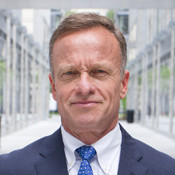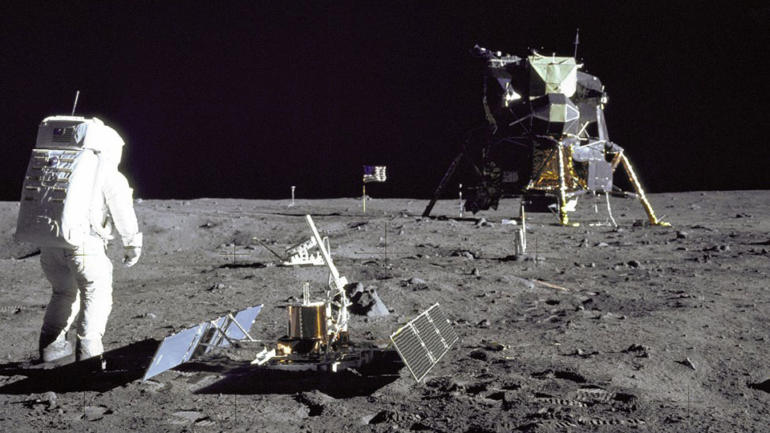It was exactly 50 years ago two U.S. astronauts first walked on the moon. This “giant leap for mankind” remains one of humanity’s greatest achievements.
There are many celebrations taking place to mark the anniversary, including events in Houston, Texas, home of America’s Apollo program.
CGTN’s Hendrik Sybrandy reports.
On July 20th, 1969, Apollo 11 astronauts reached a historic mark in the journey to man’s next frontier of space, the surface of the moon.
“This really made it tangible and real and accessible I think for people around the world,” said William Harris, the C.E.O of Houston’s Space Center.
Where that miraculous moment, that huge scientific achievement is being remembered exactly 50 years later.
“Think about this, we’re 50 years into this business. I don’t feel 50 years older,” said Apollo 11 flight director Gene Kranz.”It’s an honor to be here, an honor to be representing my mission control teams.”
Kranz is one of those connected with the landmark mission who’ve returned this weekend to honor, among others, the dozen Apollo astronauts who ended up walking on the moon.
“I think of our fathers as being those early explorers, Columbus and all of those different men and women, who discovered new worlds,” said Barbara Lovell Harrison, whose father was an astronaut on Apollo 13.
The Apollo program is really celebrated year-round at the space center… Witness the moon rocks that are always on display.
In fact, parts of this complex, where astronauts trained and worked, appear frozen in time.
The Mission Operations Control Room 2 is made to look the way it did back in 1969. It’s been immaculately restored to its original condition. Minus of course the cigarette, cigar and pipe smoke.
But including the map that fixed the moonwalkers’ exact locations, the flowers that mysteriously showed up before each mission and the coffee pot that fueled the intense work that went on here.
“It was really important that we bring this room to life,” said mission control host Tom Scott.
It’s time now, many space enthusiasts say, to re-fire those exploratory engines that powered an eight-year lunar sprint back then, starting with a return trip to the moon.
“It’s the place we can get to. It’s the one place we can explore easily,” said Jack Burns, a professor of astronomy at the University of Colorado.
Burns’ goal is to place two radio telescopes on the lunar surface. He says today’s advanced technology will allow us to use the moon as a stepping-stone to Mars.
“In going to the moon this time, what we’re going to be doing is we’re really going to be taking Silicon Valley with us,” said Burns.
No need, Harris says, for Cold War-style competition to drive our efforts.
“It’s not a reaction to something that was a perceived threat or a race against another nation, it’s really about greater insight, learning, innovation and the opportunities it presents,” said Harris.
Poppy Northcutt is NASA’s first female engineer during the Apollo days. She says the public’s fascination with space hasn’t gone away but she worries about America’s political will and funding for endeavors like the proposed Artemis moon mission in 2024.
“I’m thrilled to have space back in the conversation,” said Northcutt. “We can get together, we can have a common goal, we can achieve great things if we have common goals, so maybe we should get another common goal.”
It’s worth considering, she says, half a century after the seemingly impossible became reality another world away.
 CGTN America
CGTN America
 In this image obtained from NASA, Lunar Module pilot Buzz Aldrin was photographed during the Apollo 11 extravehicular activity on the moon by mission commander Neil Armstrong. Aldrin had just deployed the Early Apollo Scientific Experiments Package on July 20, 1969. (Photo by Neil ARMSTRONG / NASA / AFP)
In this image obtained from NASA, Lunar Module pilot Buzz Aldrin was photographed during the Apollo 11 extravehicular activity on the moon by mission commander Neil Armstrong. Aldrin had just deployed the Early Apollo Scientific Experiments Package on July 20, 1969. (Photo by Neil ARMSTRONG / NASA / AFP)
